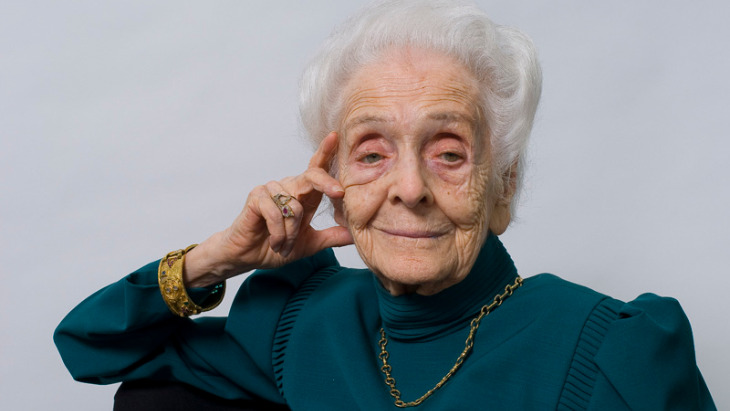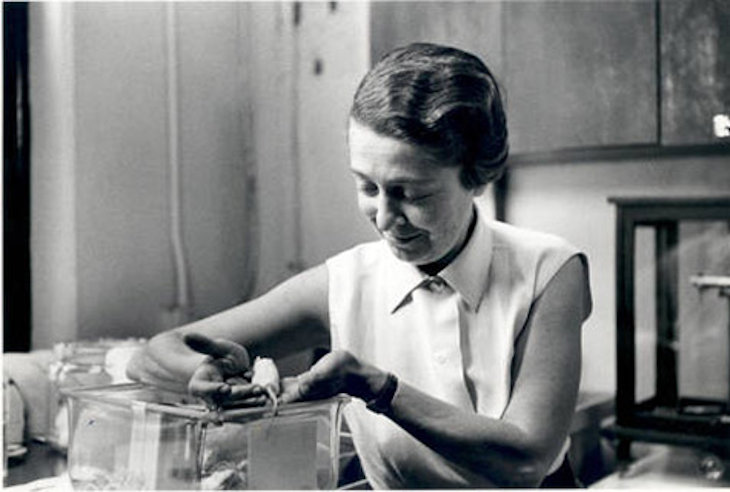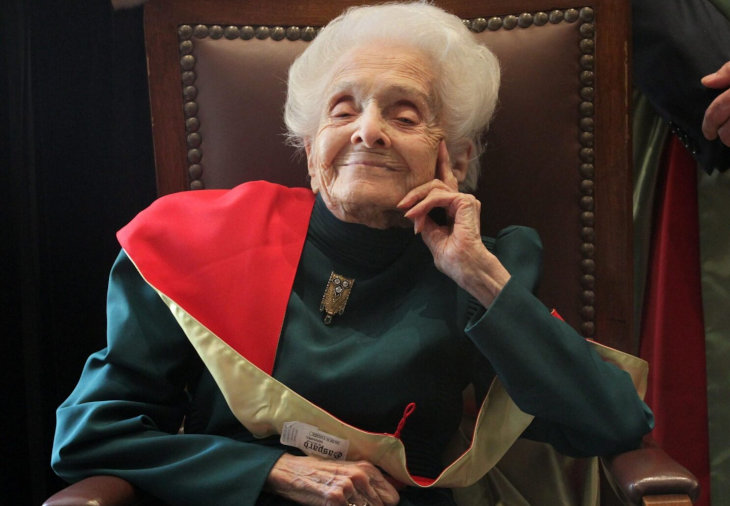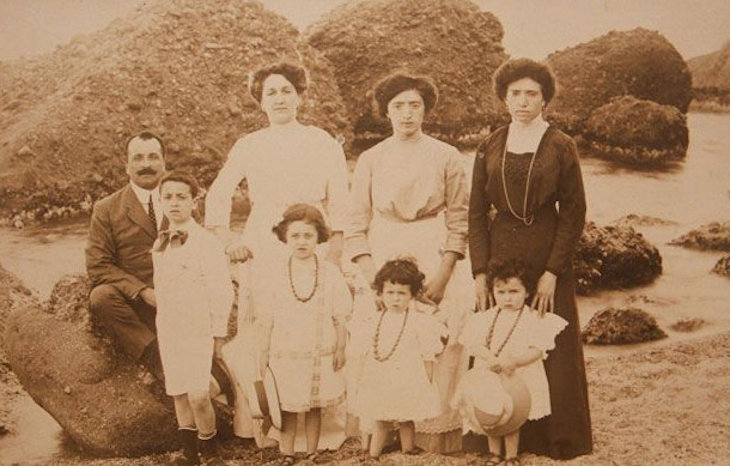 Passover’s Message of Hope in the Aftermath of Oct. 7
Passover’s Message of Hope in the Aftermath of Oct. 7


7 min read
Despite WWII-era fascist laws barring Jews from society, Rita Levi-Montalcini, a brilliant scientist, conducted pioneering experiments in her bedroom.
“If I had not been discriminated against or had not suffered persecution, I would never have received the Nobel Prize,” wrote pioneering neuroscientist Rita Levi-Montalcini, who shared the 1986 Nobel Prize for Physiology or Medicine with biochemist Stanley Cohen, Ph.D.
In 1952, Levi-Montalcini had made the discovery of nerve growth factor (NGF), a protein that causes developing cells to grow by stimulating surrounding nerve tissue. In related research, Cohen had discovered epidermal growth factor, which stimulates the proliferation of epithelial cells. Both scientists conducted their research while faculty members of Washington University, St. Louis. Levi-Montalcini’s findings led to major advancements in the understanding of cell and organ growth, as well as many serious conditions including tumors, developmental malformations, cancers, Parkinson’s, and Alzheimer’s.
 Levi-Montalcini in her laboratory in the early 1960s. (Credit: Becker Medical Library)
Levi-Montalcini in her laboratory in the early 1960s. (Credit: Becker Medical Library)
Born on April 22, 1909 in Turin, Italy, Levi-Montalcini had first dreamed of becoming a writer. In her 1988 memoir, “In Praise of Imperfection,” she wrote lovingly of her family life, which included two sisters and one brother: “The four of us enjoyed a most wonderful family atmosphere filled with love and reciprocal devotion. Both parents were highly cultured and instilled in us their high appreciation of intellectual pursuit. It was, however, a typical Victorian style of life, all decisions being taken by the head of the family, the husband and father.”
Rita began to forge her own path with the tenacity and focus that characterized her entire life.
The paterfamilias, Adamo Levi, only allowed his son, Gino, to attend university, despite the exceptional intelligence of all his children. Gino became an accomplished sculptor and architect, and Rita’s twin sister, Paola, was allowed to develop a career as an artist, becoming a renowned painter. But Adamo feared that careers would interfere with his daughters’ roles as wives and mothers.
Rita began to forge her own path with the tenacity and focus that characterized her entire life. “At twenty, I realized that I could not possibly adjust to a feminine role as conceived by my father and asked him permission to engage in a professional career,” she said during her speech accepting her Nobel Prize. She had felt enormous sorrow at the death of the family’s longtime nanny, Giovanna, and was determined to become a doctor and heal the sick. After hearing his daughter out, Adamo no longer stood in her way. Within eight months, she had completed academic gaps in Latin, Greek and mathematics, and graduated from high school. She entered medical school in Turin in 1930, one of only seven women in the school, including her cousin Eugenia.
 Being awarded the Nobel Prize in Physiology or Medicine
Being awarded the Nobel Prize in Physiology or Medicine
“It was an important period of my life, despite being very demanding,” she later wrote. “I was very happy because I felt I had found the right direction in life.” She studied under the famous Italian histologist Giuseppe Levi, who taught a rigorous and unique method of approaching biological science. After graduating from medical school summa cum laude with a degree in Medicine and Surgery in 1936, Levi-Montalcini began a specialization program in neurology and psychiatry. But that same year, Mussolini issued the "Manifesto of Race," the first of a slew of antisemitic and racial laws that by 1938 had stripped Italian Jews of their citizenship as well as any government, professional or university positions.
I should thank Mussolini for having declared me to be of an inferior race. This led me to the joy of working… in a bedroom.
Undeterred in her mission, Levi-Montalcini accepted an invitation to perform research at a neurological institute in Brussels, but that role was short-lived. As soon as word spread about Germany’s planned invasion of Belgium, she returned to her family in Turin. The Levi-Montalcinis chose to “pursue some activity that needed neither support nor connection with the outside Aryan world where we lived” instead of emigrating.
 The Levi-Montalcini family. Rita's father, Adamo Levi, is on the far left. In the front row are the children, Gino, Anna, Paola and Rita. On the far right is Rita's mother, Adele Montalcini.
The Levi-Montalcini family. Rita's father, Adamo Levi, is on the far left. In the front row are the children, Gino, Anna, Paola and Rita. On the far right is Rita's mother, Adele Montalcini.
Rita Levi-Montalcini built a small research unit in her bedroom studying chick embryos, inspired by the early work of Viktor Hamburger, PhD, who was studying how wing precursors in chick embryos promote embryonic growth and development of the nerves that control them. During this time, Italian journals would not publish the work of Jewish scientists, so Levi-Montalcini published her findings abroad or through the Vatican. She later wrote, “I should thank Mussolini for having declared me to be of an inferior race. This led me to the joy of working, not anymore, unfortunately, in university institutes but in a bedroom.”
When the Germans invaded Italy in the fall of 1943, the Levi-Montalcini family fled to Florence, where they lived underground until the end of the war. Rita Levi-Montalcini was working with the Red Cross in Florence, treating severely ill and wounded war refugees. A typhus epidemic hit the refugee camp, killing as many as fifty patients a day. The experience was so emotionally draining that she decided to focus the rest of her career on research and not clinical medicine.
After the war she was reinstated in her position at the University, but Dr. Hamburger, who had been impressed by Levi-Montalcini’s published work that was connected to his own, invited her to work with him at Washington University. This invitation changed the course of her life. A planned one-year research collaboration proved so fruitful that she remained for 30 years, although from 1962 onward she divided her time between St. Louis and Rome, where she had established a research unit and for several years also served as Director of the Institute of Cell Biology of the Italian National Council of Research in Rome.
In 2001, her trailblazing work led her to be appointed an Italian senator for life by the President of the Italian Republic, Carlo Azeglio Ciampi, a prestigious position awarded “for outstanding patriotic merits in the social, scientific, artistic or literary field.”
"At 100, I have a mind that is superior – thanks to experience – than when I was 20."
Levi-Montalcini never felt drawn toward motherhood or domesticity and never married. In a 2006 interview she said, “My life has been enriched by excellent human relations, work and interests. I have never felt lonely.” Together with her twin sister Paola, she also created the Rita Levi-Montalcini Onlus Foundation, which funds educational scholarships for women in Africa. Active till nearly the end of her long life, she continued to write and gave public lectures. At the age of 99, she stood on stage for nearly one hour, speaking to a group of nearly 1,000 students, showing no signs of weariness. “There was something magnetic about her, someone so captivating that you couldn’t help but listen to her every word,” said one listener.

One year later, in 2009, Levi-Montalcini said, "At 100, I have a mind that is superior – thanks to experience – than when I was 20." She died on December 30, 2012, at age 103.
In addition to the Nobel Prize, Levi-Montalcini was heaped with honors and awards for her pioneering neuroscience research. In 1963 she was the first woman scientist to receive the Max Weinstein Award, given by the United Cerebral Palsy Association for outstanding contributions in neurological research. In 1975 she became the first woman to be installed in the Pontifical Scientific Academy, and received the National Medal of Science in 1987.
Having defied stereotypes about what women could achieve, and defying Nazi and fascist attempts to cut her off from her work, Rita Levi-Montalcini remained an unstoppable force to be reckoned with, a woman who had “a hurricane of ideas and an impetus to know more and to go forward,” said Pietro Grasso, former President of the Italian Senate.
In her memoir Levi-Montalcini wrote, “Life does not end with death. What you pass on to others remains. Immortality is not the body, which will one day die. That does not matter. . . of importance is the message you leave to others. That is immortality.”

This is an inspiring article. The determination leaps off the page.